Treadmill Size Chart
Folding Treadmill
Recommended Space (L x W): 60″ – 80″ x 30″ – 36″ (152 – 203 cm x 76 – 91 cm)
Recommended Weight Capacity: 250 – 300 lbs (113 – 136 kg)
Running Surface: Medium to Large
Best For: Ideal for small spaces and home gyms. It can be folded up for storage when not in use.
Non-Folding Treadmill
Recommended Space (L x W): 70″ – 84″ x 32″ – 40″ (178 – 213 cm x 81 – 102 cm)
Recommended Weight Capacity: 300 – 400 lbs (136 – 181 kg)
Running Surface: Large
Best For: Best for dedicated home gyms with more space. Provides a more durable frame and larger running surface.
Compact Treadmill
Recommended Space (L x W): 50″ – 60″ x 24″ – 30″ (127 – 152 cm x 61 – 76 cm)
Recommended Weight Capacity: 200 – 250 lbs (91 – 113 kg)
Running Surface: Small
Best For: Space-saving option for apartments or small rooms. Ideal for walking or light jogging.
Commercial Treadmill
Recommended Space (L x W): 75″ – 90″ x 36″ – 40″ (191 – 229 cm x 91 – 102 cm)
Recommended Weight Capacity: 400 – 600 lbs (181 – 272 kg)
Running Surface: Extra Large
Best For: Designed for heavy usage, ideal for gyms or fitness centers. Offers advanced features and a very large running surface.
Under Desk Treadmill
Recommended Space (L x W): 50″ – 55″ x 24″ – 30″ (127 – 140 cm x 61 – 76 cm)
Recommended Weight Capacity: 250 – 300 lbs (113 – 136 kg)
Running Surface: Small
Best For: Compact treadmill that fits under a desk for walking while working. Ideal for office use.
Note: The treadmill specifications are based on space requirements, weight capacity, and use cases. Choose the one that best suits your needs and available space.
Looking for the perfect fit? Check Out These Best-Selling Treadmill.
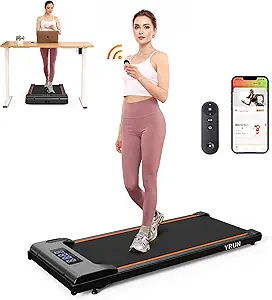
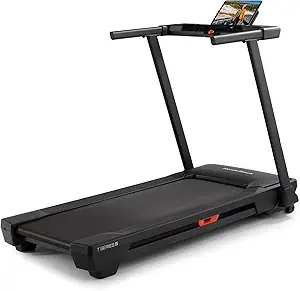
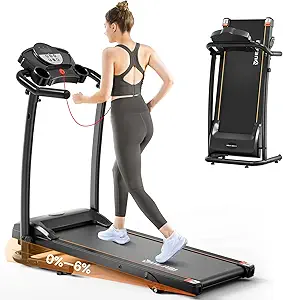
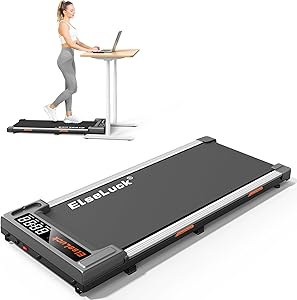
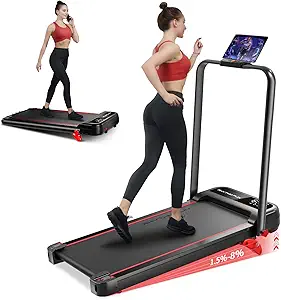
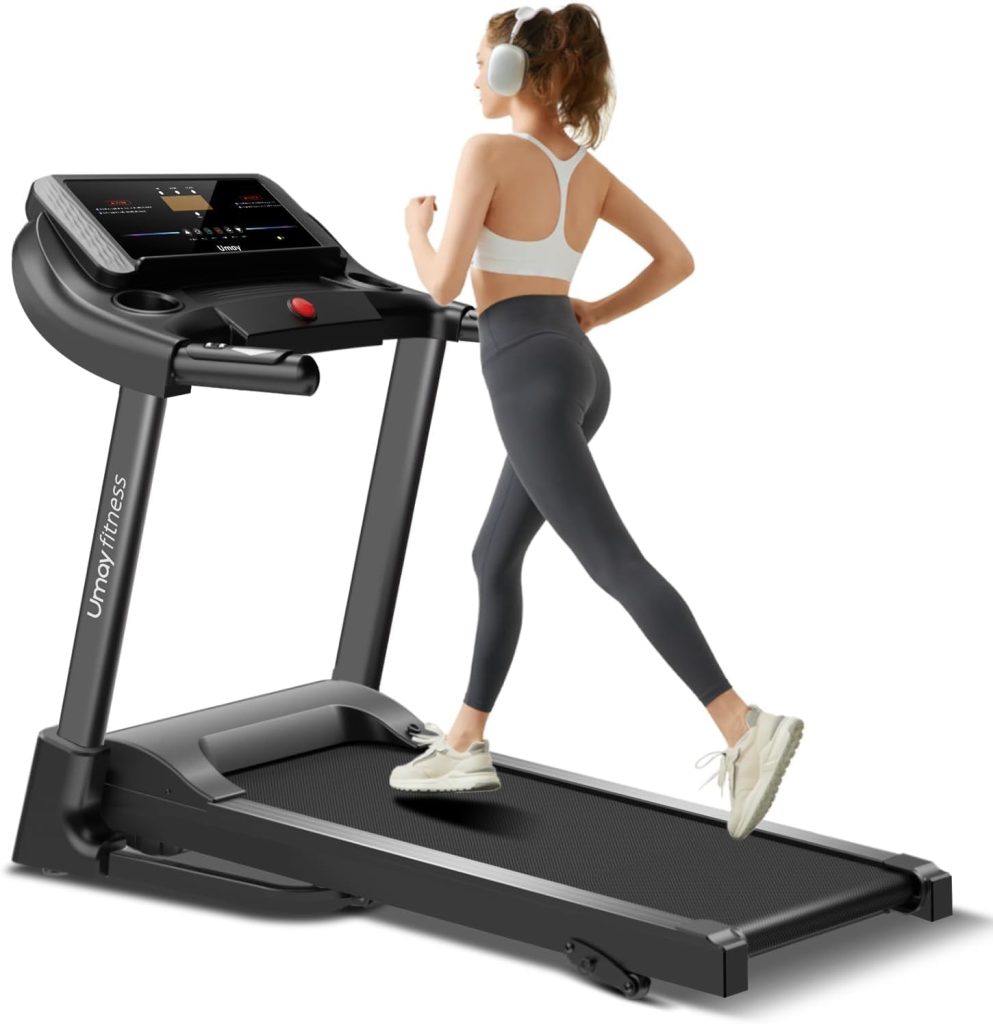
A Treadmill Size Chart helps you select the right treadmill dimensions based on your height, stride length, fitness goals, and the available space in your home or gym. Treadmills come in various deck lengths, widths, and motor power capacities, and the right size will ensure you have an effective and comfortable workout while preventing injuries. Below is a breakdown of the important factors to consider when choosing a treadmill, followed by a size chart to guide you.
Exercise Treadmill Size Chart
| Type of Treadmill | Recommended Space (L x W) | Recommended Weight Capacity | Running Surface | Best For |
|---|---|---|---|---|
| Folding Treadmill | 60″ – 80″ x 30″ – 36″ (152 – 203 cm x 76 – 91 cm) | 250 – 300 lbs (113 – 136 kg) | Medium to Large | Ideal for small spaces and home gyms. It can be folded up for storage when not in use. |
| Non-Folding Treadmill | 70″ – 84″ x 32″ – 40″ (178 – 213 cm x 81 – 102 cm) | 300 – 400 lbs (136 – 181 kg) | Large | Best for dedicated home gyms with more space. Provides a more durable frame and larger running surface. |
| Compact Treadmill | 50″ – 60″ x 24″ – 30″ (127 – 152 cm x 61 – 76 cm) | 200 – 250 lbs (91 – 113 kg) | Small | Space-saving option for apartments or small rooms. Ideal for walking or light jogging. |
| Commercial Treadmill | 75″ – 90″ x 36″ – 40″ (191 – 229 cm x 91 – 102 cm) | 400 – 600 lbs (181 – 272 kg) | Extra Large | Designed for heavy usage, ideal for gyms or fitness centers. Offers advanced features and a very large running surface. |
| Under Desk Treadmill | 50″ – 55″ x 24″ – 30″ (127 – 140 cm x 61 – 76 cm) | 250 – 300 lbs (113 – 136 kg) | Small | Compact treadmill that fits under a desk for walking while working. Ideal for office use. |
Factors to Consider When Choosing a Treadmill:
- Space Availability: Make sure to measure the available space in your home or gym. Foldable treadmills are ideal for small areas, while commercial treadmills require larger spaces.
- Weight Capacity: Choose a treadmill with a weight capacity that supports your weight. Commercial and non-folding treadmills tend to support higher weight limits.
- Running Surface: A larger running surface provides more comfort, especially for running or intense workouts. Consider your stride length when choosing a treadmill.
- Usage Type: If you’re a serious runner or planning to use the treadmill for intense workouts, a commercial or non-folding treadmill will be a better fit. For light jogging or walking, a compact or under-desk treadmill will be sufficient.
- Features: Higher-end treadmills often come with advanced features such as incline settings, touchscreen displays, and built-in workout programs.
FAQs About Treadmill Size Chart
1. What are the standard treadmill sizes?
Treadmills vary in size based on usage and features. Here are the common dimensions:
| Treadmill Type | Running Surface (L x W) | Total Dimensions (L x W x H) | Best For |
|---|---|---|---|
| Compact | 45″ x 16″ | 55″ x 25″ x 50″ | Small spaces, walking |
| Standard | 50″-55″ x 18″-20″ | 65″-72″ x 30″-36″ x 55″ | Home use, jogging |
| Large | 58″-60″ x 20″-22″ | 72″-80″ x 35″-40″ x 60″ | Running, heavy-duty use |
| Commercial | 60″-65″ x 22″-24″ | 80″+ x 36″-40″ x 65″+ | Gyms, professional training |
2. How do I choose the right treadmill size for my home?
Consider:
- Available space – Measure your area before buying.
- Your height & stride – Taller users need longer decks (at least 55” for running).
- Usage – Walkers can use smaller decks, runners need larger ones.
3. What is the ideal treadmill belt size?
- Walking: 45-50″ (L) x 16-18″ (W)
- Jogging: 50-55″ (L) x 18-20″ (W)
- Running: 55-60″ (L) x 20-22″ (W)
4. Do treadmills come in different widths?
Yes! Standard widths are 16-22 inches. Wider belts provide more comfort but require more space.
5. How much space do I need for a treadmill?
Ensure at least:
- 2 feet (60 cm) on the sides for safety
- 3-6 feet (90-180 cm) behind for clearance
- Ceiling height: Add at least 12 inches to your height when running
6. What is the difference between folding and non-folding treadmills?
- Folding: Saves space, great for home use.
- Non-folding: Sturdier, better for intense workouts.
7. Are commercial treadmills bigger than home treadmills?
Yes! Commercial treadmills have larger decks (60”+ long, 22”+ wide) and require more space.
8. What treadmill size is best for tall users?
If you’re over 6 feet (183 cm), choose a deck at least 55” for jogging and 60”+ for running.
9. What is the weight capacity of treadmills?
Most home treadmills support 250-350 lbs (113-159 kg), while commercial models go up to 400+ lbs (181+ kg).
10. Can a treadmill fit in a small apartment?
Yes! Look for compact or folding treadmills with decks under 50 inches. Some models can be stored upright.
Conclusion
When choosing a treadmill, consider your height, stride length, and fitness level. The deck length and width should provide enough space for you to run or walk comfortably, while the motor power should suit your workout intensity. Use the Treadmill Size Chart as a guideline to help you select a machine that meets your needs for both comfort and performance. Also, keep in mind space constraints and weight capacity to ensure the treadmill fits in your designated area and supports your goals.






